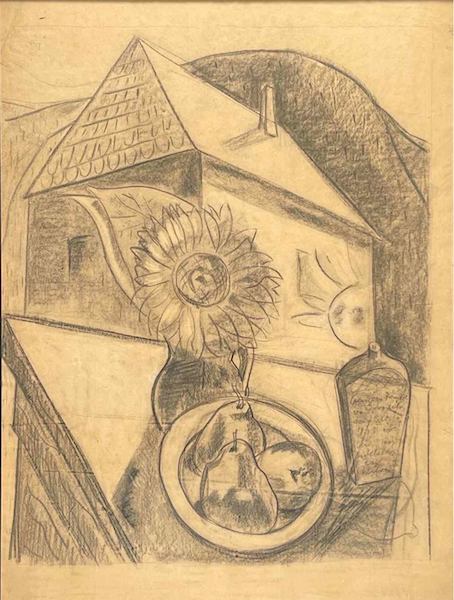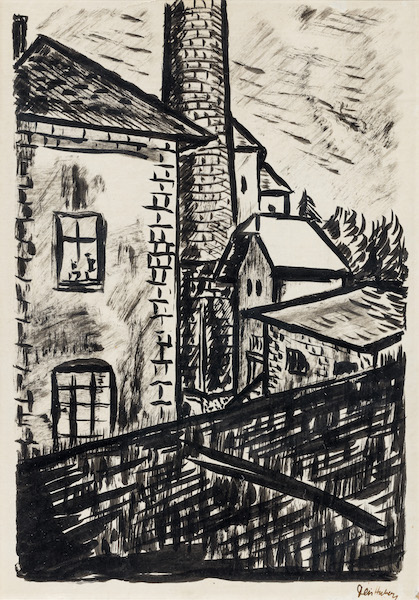Biography
István Dési Huber interrupted his studies, learned trades for several years, and then voluntarily joined the army in 1914. After four years in the military, he returned to Dés to learn goldsmithing. In 1921, he moved to Pest to work in Polgár's silverware factory, while in the evenings he attended the evening course of the School of Applied Arts and then the free school of Artúr Podolini-Volkmann.
Between 1924 and 1927, he worked with his friend Sugár Andorral in Milan and learned the technique of copper etching in the workshop of Béla Krón, with which he appeared at the Florence International Copper Etching Exhibition and the Turin Quadriennale. Returning to Hungary, he exhibited his papers in the Mentor bookstore, and then in 1928 his series of linocuts in the Kovács Salon.
Between 1929 and 1933, he needed sanatorium treatments, but he did not give up hard work: he built up his methodical world of painting while writing studies on his aesthetic views. In 1930, he participated in the Tamás Gallery's group exhibition New progressive artists, as well as in the founding of the joint studio of socialist visual artists in Vasvári Street. In 1934, he was arrested on charges of communist subversion and then released. In 1935, he underwent a serious medical operation. In 1938, he appeared with great success in the company of Jenő Barcsay and Zoltán Székessy at the Ernst Museum. In 1941, he published his article "Study on the art of the fourth order" in Népszava, which caused serious controversy. In 1944, he was taken to a pulmonary sanatorium, where he was informed just a few days before his death that he had won the landscape award of the Sziny Society. In 1958, he was awarded a posthumous Kossuth Prize. His memorial exhibition was organized by the Hungarian National Gallery in 1964.
Dési Huber's fine art works and art theory writings are both important parts of Hungarian art history. His painting is grouped into two themes: the representation of society and nature, in a constructively edited, expressive style.


